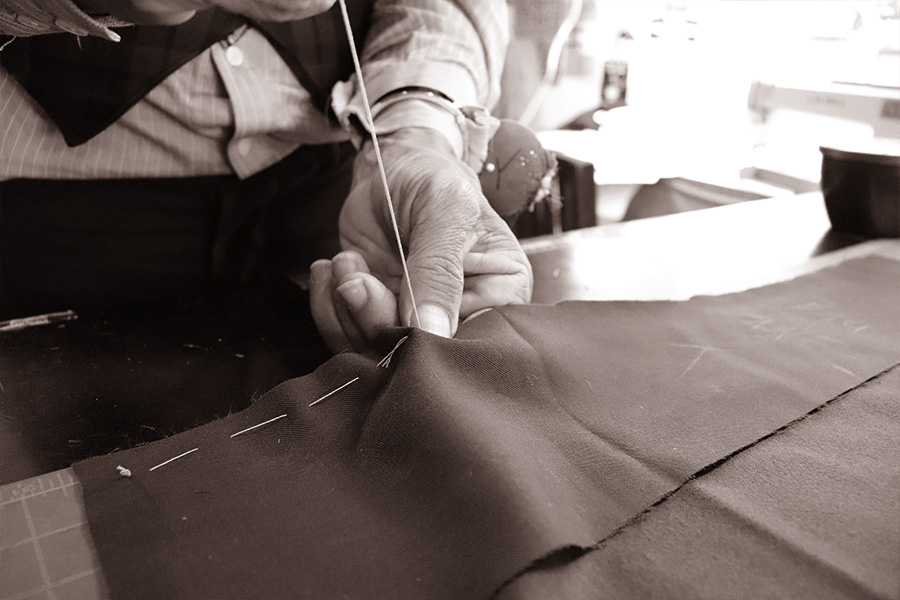Understanding the Tailoring Process: From Fabric Choice to Final Fitting for the Ideal Wardrobe
The tailoring procedure is an intricate interaction of art and science, beginning with the important decision of material selection and culminating in the specific changes of last fittings. Each material type brings unique qualities that affect not just the aesthetic appeal yet likewise the garment's durability and suitability for numerous events. Understanding the nuances of customizing methods can elevate one's closet to unmatched levels of refinement. As we check out these elements better, one need to think about just how also the smallest information can substantially impact the total result of one's individual style.
Relevance of Fabric Choice
Picking the right material is vital in the tailoring procedure, as it straight affects the convenience, longevity, and general aesthetic of the last garment (tailor perth). The selection of material establishes the structure for the garment's design, performance, and functionality. Different materials have special residential or commercial properties, such as breathability, stretch, and weight, which can considerably impact exactly how the garment drapes and fits the body
Additionally, material option affects the garment's longevity and ease of care. High-quality fabrics can withstand wear and tear, maintaining their look and framework gradually, while lower-quality materials may lead to pilling or fading. Additionally, the appropriate textile adds to the garment's capability to shift across celebrations and seasons, thus enhancing versatility.
A customized item made from a suitable fabric not just showcases workmanship but also boosts the wearer's confidence. Subsequently, comprehending the nuances of textile choice is critical for any customizing endeavor. It ensures that the end product not just meets the aesthetic wishes of the customer however also straightens with functional requirements, thus achieving an unified balance in between form and function in the customized wardrobe.
Sorts Of Fabrics and Their Uses
Recognizing the different kinds of fabrics readily available is vital for making notified choices during the customizing process. Each material has distinct features that dictate its viability for specific garments and events.
Its convenience allows it to be tailored right into every little thing from shirts to gowns. Its all-natural flexibility helps garments maintain shape over time.
Silk emanates deluxe and is light-weight, making it perfect for eveningwear and delicate blouses; however, it needs cautious handling because of its frailty. Bed linen, with its distinctive coating, is a preferred selection for cozy environments, providing a crisp and airy feel, yet it wrinkles easily, which might influence the garment's look.
Synthetic textiles, such as polyester and nylon, offer sturdiness and resistance to wrinkles, making them appropriate for daily wear and active clothes. Comprehending these material types and their buildings enables far better decision-making, making certain that each customized item not only fits well yet also aligns with the desired objective and event.
The Tailoring Methods Discussed
The art of tailoring counts on a selection of strategies that transform fabric right into well-fitted garments. Central to this procedure is pattern preparing, where a tailor develops themes based on the customer's dimensions and preferred design. This first step ensures that the garment will certainly fit home the user correctly before any kind of cutting occurs.
As soon as patterns are established, cutting strategies enter into play. Precision is vital as mistakes can lead to misfitting garments. Tailors usually make use of various reducing techniques, such as single-layer reducing for complex designs and multiple-layer reducing for efficiency on typical patterns.
Basting is one more essential strategy, allowing dressmakers to temporarily sew fabric pieces with each other for a preliminary installation. This technique offers the chance to assess the drape and general shape before last sewing.
Seaming methods, consisting of flat-felled seams and French joints, boost the garment's sturdiness and visual allure. Tailors likewise employ techniques such as interfacing and padding to supply framework and shape to certain locations, like collars and shoulders.
Last but not least, finishing methods, consisting of hemming and side finishing, make sure the garment's long life while providing a refined appearance. With each other, these techniques form the backbone of efficient customizing, causing beautiful, custom-fit garments.
Suitable Changes and Considerations

Secret considerations include the shoulder fit, which should neither droop neither restrict movement, and the sleeve size, which need to enable comfy arm motion while maintaining a sleek look. Additionally, changes at the waist can refine the shape, with choices to let out or absorb material as required.
The surge of trousers is an additional important element; it should rest conveniently over the hips without triggering pain, enabling ease of motion. Hemming lengths for both trousers and skirts should mirror the wearer's recommended style while valuing proportions.

Preserving Your Tailored Clothes
Appropriate upkeep of tailored garments is vital to protecting their fit and look gradually. To guarantee long life, routine cleansing is paramount. Always adhere to the treatment tag directions, which might suggest dry cleaning for delicate fabrics or equipment washing for more resilient products. Avoid constant laundering, as this can wear down the fabric and modify the garment's shape.
Storage is equally crucial; use padded wall mounts for layers and jackets to preserve shoulder framework, and shop trousers folded neatly or hung to stop creasing. Secure garments from straight sunshine, which can fade shades and damage fibers.
Furthermore, regular evaluations for small my sources repair work can prevent bigger problems. Look for loose buttons, fraying seams, or indicators of moth damage, addressing these issues immediately to keep the garment's honesty.
Finally, think about seasonal turning. Wearing customized items in moderation allows textiles to recoup, prolonging their life-span. By executing these maintenance approaches, you can ensure that your customized garments stay as immaculate as the day you first wore them, enhancing your optimal wardrobe for years to find.
Conclusion
The customizing procedure, including fabric option, proficient methods, and precise fitting adjustments, plays an essential duty in creating garments that boost both comfort and design. Each phase adds to the overall efficiency of the last item, guaranteeing that garments not only fits well but likewise mirrors individual identity. Additionally, comprehending the significance of upkeep prolongs the life of customized garments, strengthening click now their value in a well-curated closet. A comprehensive technique to customizing culminates in a positive and polished look.
Selecting the best fabric is critical in the tailoring procedure, as it directly influences the comfort, resilience, and overall aesthetic of the last garment. The choice of fabric sets the structure for the garment's capability, performance, and design. Various materials possess one-of-a-kind properties, such as weight, stretch, and breathability, which can considerably influence exactly how the garment drapes and fits the body.
The art of customizing counts on a selection of strategies that change material right into well-fitted garments.The tailoring process, incorporating material option, skilled methods, and precise suitable changes, plays a crucial duty in producing garments that improve both comfort and design.